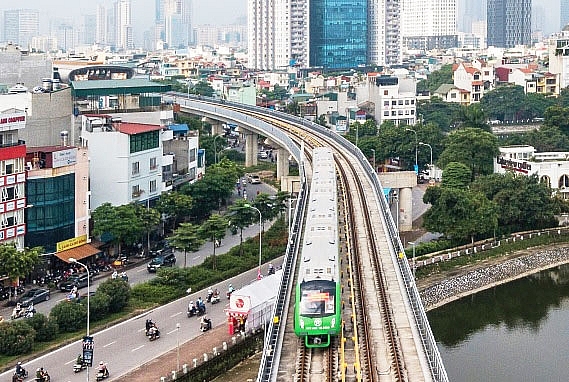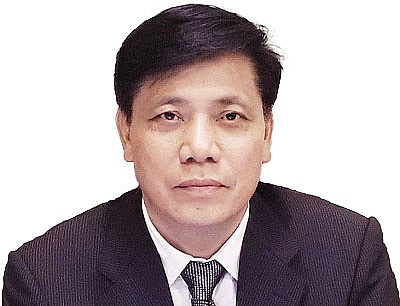Smart transport a focus in attraction
 |
| Vietnam is working on several fronts to modernise its transport systems Photo: Le Toan |
What role do foreign direct investment (FDI) and technology play in transportation development in Vietnam?
 |
| Nguyen Ngoc Dong |
To catch up with countries in the world, we should learn from their mistakes and successes, while considering applying new technologies and technical solutions through technical assistance and technology transfer, as well as education and investment projects
There is still a lot to gain from FDI in transport projects, especially now that the Fourth Industrial Revolution is knocking on our doors. FDI is not only a significant source of capital for transport projects that are particularly capital-intensive, it is also a gateway to accessing technologies that Vietnam lacks – from construction and design technology to new intelligent applications in the management and monitoring of projects in operation.
This latter part, which pertains to the so-called intelligent transport networks, is of exceptional importance in the new 4.0 era and FDI is essential to accessing global know-how. As such, we will focus on boosting FDI attraction in the monitoring and management of traffic (especially smart transportation) in urban areas.
Vietnam has made definitive advances in the area, not in small part thanks to foreign investors committing technology and know-how to their projects, in addition to capital. The country now applies radio frequency identification (RFID) in electronic toll collection (ETC) along several expressways. The application of new designs and technologies in transport projects such as cable-stay bridges, tunnels and roads, as well as in maintenance has helped increase economic efficiency, and environment protection.
At the moment, local companies are able to manufacture and assemble monitoring devices for cars, trains, and water vessels. They are also designing intelligent transport systems (ITS) for new expressways. FDI has been essential to bringing about this change in Vietnam and is vital to its continued momentum – both as a source of capital and as a source of critical knowledge.
Many cities like Hanoi, Ho Chi Minh City, and Danang are developing smart transport networks. What policies has the government issued to support these initiatives and what will be the key tasks for the Ministry of Transportation (MoT) in this area?
In August, the prime minister approved the master plan for Vietnam’s smart and sustainable city development strategy in the 2018-2025 period, with a vision to 2030. This is the key piece of legislation governing ministries’ and cities’ efforts to build smart and sustainable development plans.
The MoT will work to fulfil our tasks assigned in the master plan, while co-operating closely with other ministries, relevant agencies, and cities and provinces to implement transport-related tasks.
The MoT will systemise standards and criteria, as well as issue guidelines related to the development, management, and operation of intelligent transport infrastructure. Additionally, it will promote the application of intelligent transport solutions in different segments, while training experts to develop and operate ITS, particularly targeting high-speed railways, the North-South expressway, as well as airports and seaports.
The transport sector now commands strong interest from technology groups. What are the strategies of smart transport development? Also, can you name some smart transport projects that are particularly promising for foreign investors?
Vietnam’s transport development planning and strategy, as well as science and technology development strategy during 2011-2020 approved by the prime minister, highlight safe, environmentally friendly, and smart transport as key to the country’s cultural, social, and economic development.
The transport sector is boosting the application of new technologies and new materials in road construction and maintenance to increase economic and technical efficiency, while protecting the environment.
For example, in railways, we need technologies and technical solutions to raise safety for train operations. We are considering applying management intelligent system technology in cargo transportation.
In inland waterways, needed technologies include software for seaport management, infrastructure management, maritime electronic map I-ENC, and automatic identification systems (AIS).
In aviation, technologies seeing high demand include civil aviation safety oversight reporting and tracking database (CASORT), air traffic flow management (ATM), air traffic service message handling system (AMHS), computerised reservation systems (Galileo, Amadeus), SabreSonic Check-in, and others.
Vietnam faces huge challenges in building, operating, and developing intelligent transport systems – which provide immense opportunities for those who could be ready to take chances. Vietnam is in the process of transport infrastructure development, with a number of key projects underway, including expressways, high-speed railways, urban railways, Long Thanh International Airport, and others. Therefore, the demand for science and technology applications in the development of intelligent transport infrastructure is huge, presenting major opportunities for the business community.
What the stars mean:
★ Poor ★ ★ Promising ★★★ Good ★★★★ Very good ★★★★★ Exceptional
 Tag:
Tag:
Related Contents
Latest News
More News
- Ho Chi Minh City hits $8.37 billion in FDI (December 29, 2025 | 08:28)
- Tax sector wraps up 2025 and sets priorities for next year (December 25, 2025 | 14:00)
- Heavy industries set for pilot greenhouse gas quotas (December 25, 2025 | 10:00)
- $250 million deal targets women-owned SMEs, sustainable agriculture (December 22, 2025 | 17:40)
- UOB sees Vietnam growth easing in fourth quarter (December 22, 2025 | 17:39)
- Government moves to establish International Financial Centre (December 21, 2025 | 21:00)
- Vietnam's IFC to target global investment flows (December 21, 2025 | 18:00)
- Ha Tinh breaks ground on major Vingroup industrial and energy projects (December 19, 2025 | 18:24)
- EVN launches major power infrastructure projects nationwide (December 19, 2025 | 18:17)
- VAL inaugurates second production line to meet domestic animal feed demand (December 19, 2025 | 16:37)























 Mobile Version
Mobile Version